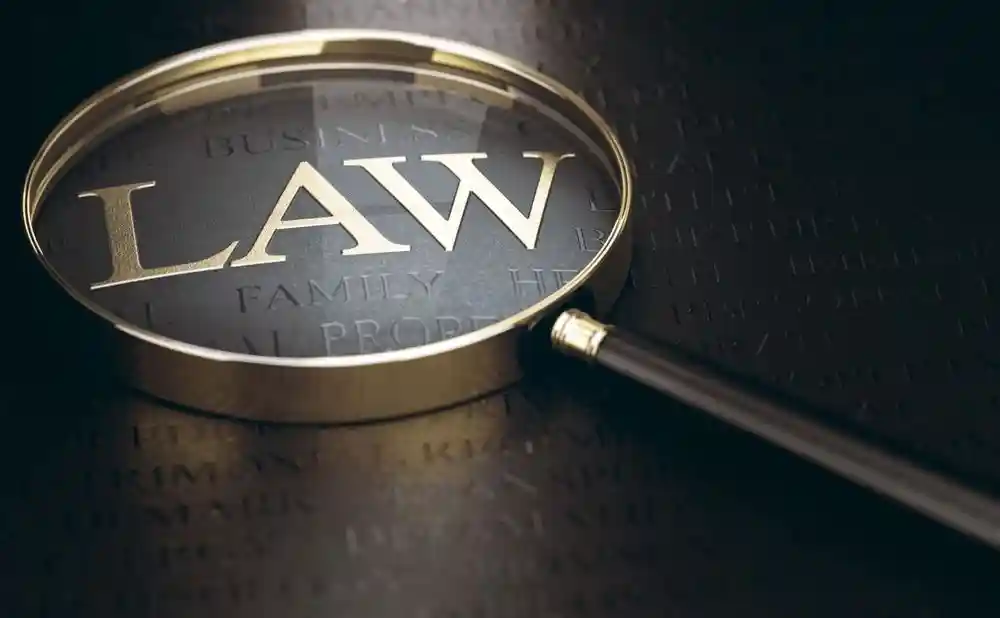
Understanding Perinatal Asphyxia: An Overview
As a Perinatal Asphyxia birth injury lawyer, I understand that Perinatal asphyxia is a medical condition that occurs when a newborn does not receive adequate oxygen before, during, or immediately after birth. This condition can lead to severe and lasting complications, potentially affecting the child’s development and quality of life. Understanding the complexities of perinatal asphyxia is essential for parents and guardians to ensure they can recognize the signs and seek appropriate legal and medical assistance.
The importance of addressing perinatal asphyxia promptly cannot be overstated. Early recognition and intervention can significantly improve outcomes for affected infants. Medical professionals must monitor pregnancies and births closely to identify any signs of fetal distress that may lead to perinatal asphyxia. Effective communication and swift action are critical in preventing or minimizing the effects of this condition.
Parents should be aware of the medical protocols and procedures during labor and delivery that aim to prevent perinatal asphyxia. These include fetal heart monitoring, timely decision-making regarding cesarean sections, and the availability of resuscitation equipment and trained personnel. Understanding these measures can help parents advocate for the best care during childbirth.
The Effects of Perinatal Asphyxia on Newborns
The effects of perinatal asphyxia on newborns can vary widely, depending on the severity and duration of the oxygen deprivation. In mild cases, the infant may recover completely with no long-term effects. However, moderate to severe cases can result in significant neurological and developmental challenges.
Common effects of perinatal asphyxia include hypoxic-ischemic encephalopathy (HIE), where brain function is impaired due to lack of oxygen. This condition can lead to motor deficits, cognitive impairments, and, in some cases, cerebral palsy. The extent of these effects depends on how quickly and effectively the condition is treated.
Long-term follow-up and supportive care are crucial for children affected by perinatal asphyxia. Early intervention programs, physical therapy, and educational support can make a significant difference in the child’s development and quality of life. Parents should work closely with healthcare providers to ensure their child receives comprehensive care tailored to their specific needs.

Identifying Birth Asphyxia Injuries: Signs and Symptoms
Recognizing the signs and symptoms of birth asphyxia injuries is vital for early intervention and treatment. Some common indicators that a newborn may have experienced perinatal asphyxia include difficulty breathing, weak muscle tone, and a low Apgar score, which assesses the baby’s physical condition immediately after birth.
In addition to these initial signs, delayed development milestones, such as difficulties in motor skills, speech, and cognitive functions, may become apparent as the child grows. Parents should be vigilant and consult healthcare providers if they notice any developmental delays or unusual behavior in their child.
Early diagnosis can lead to more effective management of the condition and improve the child’s overall prognosis. Parents should maintain an open line of communication with pediatricians and specialists to ensure any concerns are promptly addressed and that appropriate interventions are implemented.

Common Causes of Perinatal Asphyxia
Several factors can contribute to the occurrence of perinatal asphyxia. Understanding these causes can help in identifying potential risks and ensuring appropriate preventive measures are in place. Common causes include placental insufficiency, umbilical cord complications, and prolonged or obstructed labor.
Maternal health issues, such as high blood pressure, diabetes, or infections, can also increase the risk of perinatal asphyxia. Adequate prenatal care and monitoring can help identify and manage these risks effectively. Healthcare providers should educate expectant mothers about the importance of regular check-ups and healthy lifestyle choices during pregnancy.
In some cases, medical negligence or errors during labor and delivery can lead to perinatal asphyxia. Failure to monitor fetal distress, delayed decision-making in emergency situations, or inadequate resuscitation efforts can all contribute to the condition. Understanding these potential causes is crucial for parents in evaluating the care received during childbirth.

Birth Asphyxia Negligence: What Constitutes Malpractice?
When medical professionals fail to adhere to the standard of care required during childbirth, it may constitute negligence or malpractice. Birth asphyxia negligence can occur if healthcare providers do not monitor fetal distress adequately, fail to perform necessary interventions promptly, or make errors in judgment that lead to oxygen deprivation.
Proving malpractice in birth asphyxia cases can be complex and requires a thorough understanding of both medical and legal principles. It involves demonstrating that the medical professionals deviated from accepted standards of care and that this deviation directly caused the child’s injuries. Gathering evidence, such as medical records and expert testimonies, is essential in building a strong case.
Parents should be aware that malpractice claims have specific statutes of limitations, which vary by state. It is crucial to seek legal advice as soon as possible if you suspect that negligence contributed to your child’s condition. Acting promptly ensures that you have the best chance of pursuing a successful claim.
The Role of a Perinatal Asphyxia Birth Injury Lawyer
A perinatal asphyxia birth injury lawyer specializes in handling cases where medical negligence during childbirth results in birth asphyxia injuries. These legal professionals play a crucial role in helping families navigate the complexities of malpractice claims and seek justice for their children.
Your lawyer will conduct a thorough investigation of the case, gathering medical records, consulting with medical experts, and evaluating the evidence to determine if malpractice occurred. They will guide you through the legal process, ensuring that your rights are protected and that you understand your options at every step.
In addition to providing legal representation, a birth injury lawyer can offer emotional support and guidance during what is often a challenging and emotional time for families. They can help you understand the potential outcomes of the case and what compensation you may be entitled to receive.
Legal Process for Birth Asphyxia Malpractice Claims
The legal process for birth asphyxia malpractice claims involves several critical steps. Understanding this process can help you prepare for what lies ahead and ensure that you are actively involved in the pursuit of justice for your child.
- Initial Consultation: Begin by discussing your case with a qualified birth injury lawyer who will evaluate the details and advise you on the strength of your claim.
- Investigation and Evidence Gathering: Your lawyer will collect and review medical records, consult with medical experts, and gather evidence to build a strong case supporting your claim of negligence.
- Filing the Lawsuit: If there is sufficient evidence of malpractice, your lawyer will file a lawsuit against the responsible parties, outlining the negligence and the damages being sought.
- Discovery Process: Both parties will exchange information and evidence related to the case. This phase may involve depositions, interviews, and further expert consultations.
- Negotiation and Settlement: Many cases are resolved through negotiation and settlement before reaching trial.
- Trial: If a settlement cannot be reached, the case will proceed to trial, where both parties will present their arguments, and a judge or jury will determine the outcome.
Throughout this process, your lawyer will keep you informed and involved, ensuring that you understand each step and feel confident in the pursuit of justice for your child.

Seeking Compensation: What to Expect
Seeking compensation for birth asphyxia injuries is an essential step in ensuring that your child receives the care and support they need. Compensation can cover a wide range of expenses, including medical bills, ongoing therapy, special education, and adaptive equipment.
In addition to economic damages, you may also be eligible for non-economic damages, such as pain and suffering, emotional distress, and loss of quality of life. Your lawyer will help you understand the types of compensation available and will work to secure a fair settlement or verdict on your behalf.
It is important to remember that the legal process can be lengthy and emotionally taxing. However, securing compensation can provide your family with the financial resources needed to support your child’s long-term care and development. Your lawyer will be your advocate throughout this process, ensuring that your rights are protected and that you achieve the best possible outcome for your child.
Conclusion: Protecting Your Rights and Your Child’s Future
Navigating a birth asphyxia malpractice case can be daunting, but understanding your rights and enlisting the help of a knowledgeable perinatal asphyxia birth injury lawyer can make a significant difference. By taking prompt action and seeking legal advice, you can pursue justice for your child and secure the resources needed for their care and development.
If you suspect that medical negligence contributed to your child’s birth asphyxia, do not hesitate to reach out to a specialized lawyer who can guide you through the legal process. Protecting your rights and your child’s future is paramount, and with the right support, you can achieve a positive resolution that benefits your family.
Support for Parents Affected by Child Birth
Support Groups
Birth Injury Centers
Online Support Groups:
Trauma Support Groups:
Cerebral Palsy Support Groups
Erb’s Palsy Support Groups
Brachial plexus Support Groups
Call Perinatal Asphyxia birth injury lawyer Timothy L. Miles Today
If your child suffered birth asphyxia negligence, contact Perinatal Asphyxia birth injury lawyer Timothy L. Miles today for a free and confidential case evaluation. As always, the call is free and so is the fee unless we will or settle your case, so give us a call today. (855) 846-6529 or [email protected]. (24/7/365).
Timothy L. Miles, Esq.
Law Offices of Timothy L. Miles
Tapestry at Brentwood Town Center
300 Centerview Dr. #247
Mailbox #1091
Brentwood,TN 37027
Phone: (855) Tim-MLaw (855-846-6529)
Email: [email protected]
Website: www.classactionlawyertn.com


